創刊日:100 年 6 月 10 日
發行人:教育局局長
出版者:臺中市政府教育局
地址:42007 臺中市豐原區陽明街 36 號
電話:04-2228-9111(代表號)
臺中市教育電子報自民國 100 年 6 月起,每月 10 日發行一期,為教育夥伴提供更快速便捷與寬廣詳實之教育資訊 ,歡迎各界關心教育訊息之舊雨新知,上網免費訂閱,並請廣為推廣宣傳。
It is widely accepted that mutual interaction and bidirectional feedback between a teacher and students should be emphasized for effective teaching and learning. Nevertheless, albeit decades of pedagogical practices of English in schools around the island, most of the instructions still remain teacher-centered, lecture-based, and textbook-based. Such a unidirectional way of teaching cannot effectively enhance students’ English abilities. In English classes, in addition to the focuses on vocabulary, grammar, and sentence patterns, teachers genuinely hope to empower students with effective and proficient English communication skills. However, as there is not much of a chance for Taiwanese students to practice English in real life, and English teaching has remained decontextualized, it is rather challenging for students to use English as a tool for knowledge building and perspective expression.
Consequently, in order to enhance students' abilities to successfully apply what they have learned to real-life contexts, I have tried integrating “Wonder”, a children's novel, to my curriculum, where students were engaged in collaborative tasks such as discussing issues related to bullying, friendship, and being different. Due to the time limit, the lesson took place once a week (45 minutes for one topic). Prior to the discussion of the novel chapters, the students had pre-instructional material preview. In addition, the students were guided through vocabulary building activities (i.e., explanation of new words) to enhance their sentential comprehension. Game-based “SPOT IT”, in combination with Bingo and word scramble, was also adopted to keep the students motivated in learning.
Due to limited educational resources, I tried to use items readily available in the classroom, such as pens, papers, computer, and printer. As regards the materials for SPOT IT, I made word cards via “Make your own Spot It clone” online. The game included a deck of word cards, each printed with six different words. Any two cards shared one, and only one, same word. The object of the game is for students to be the first to announce the identical word between two given cards (see Figure 1 and 2). The activity was as follows:
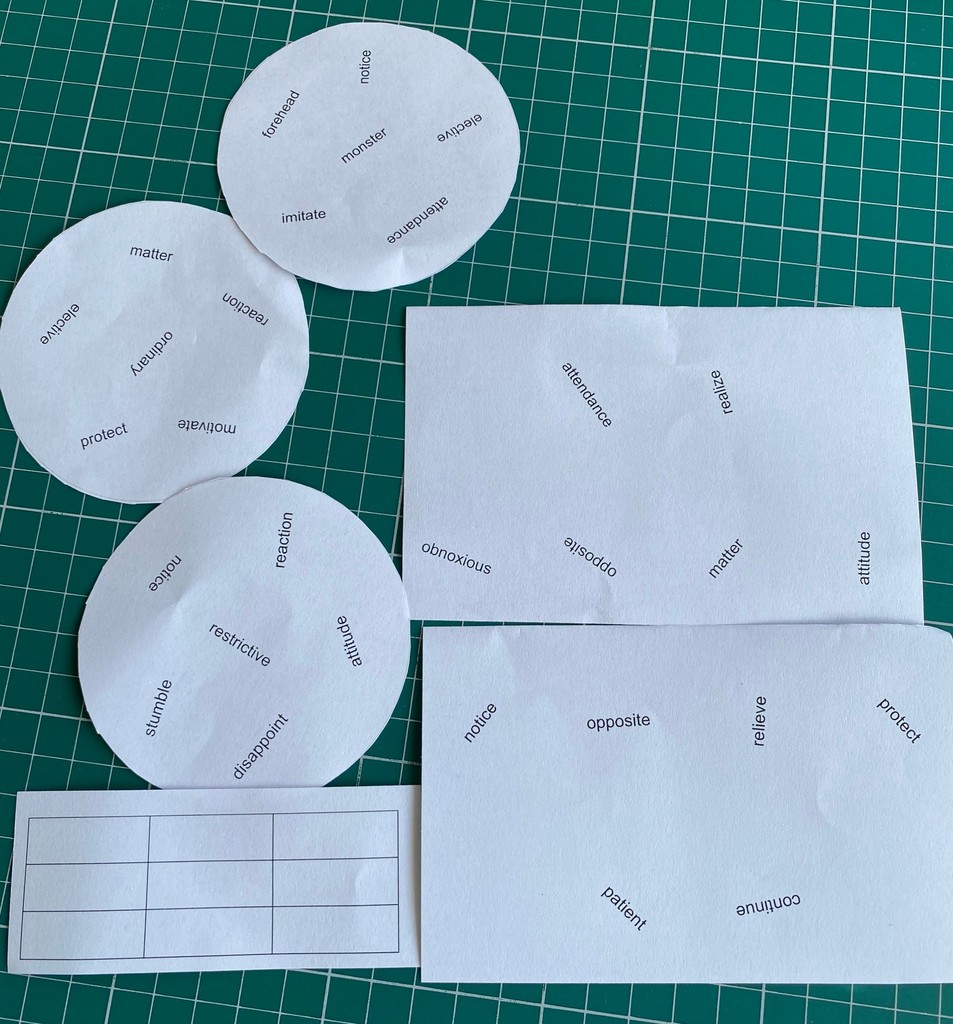 | 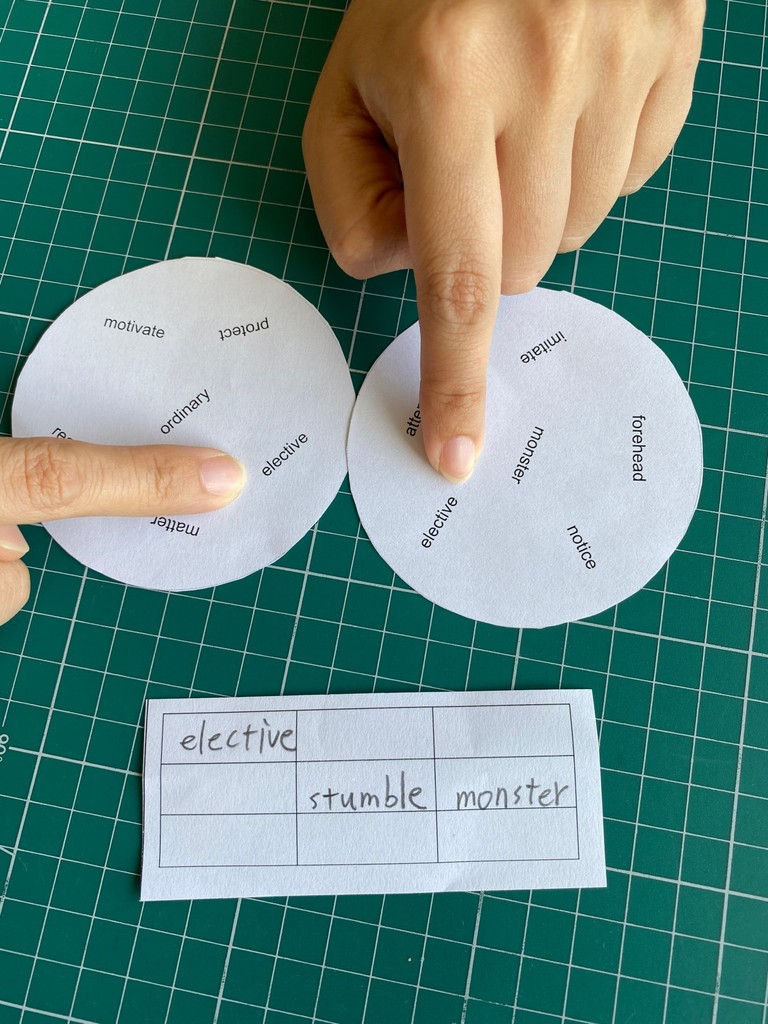 |
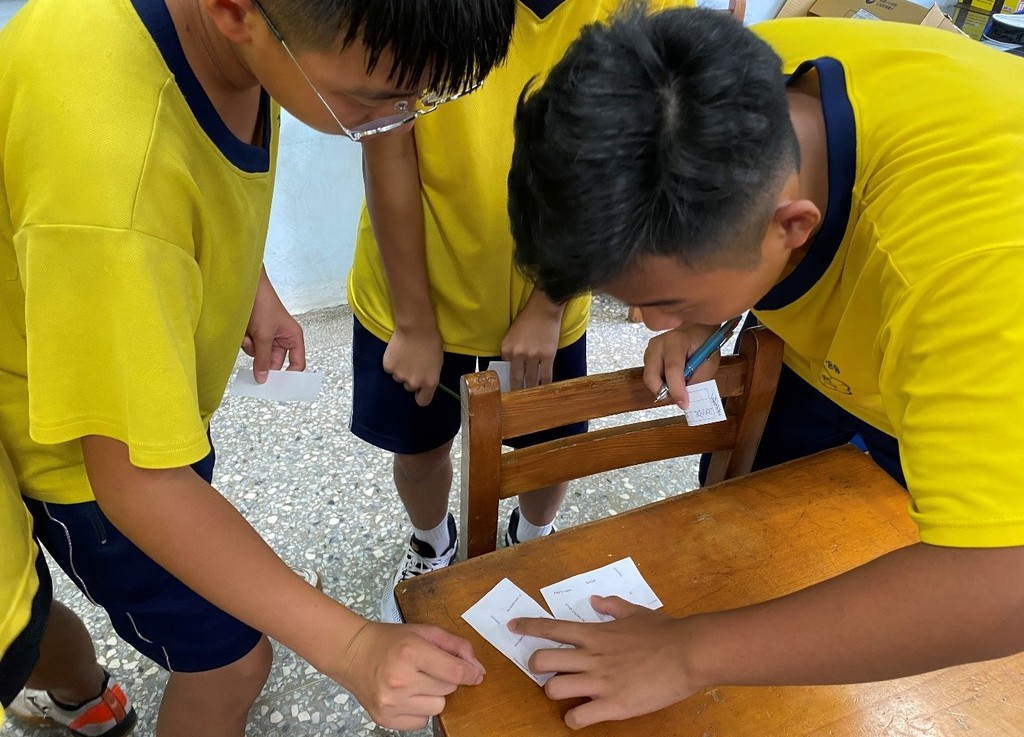 | 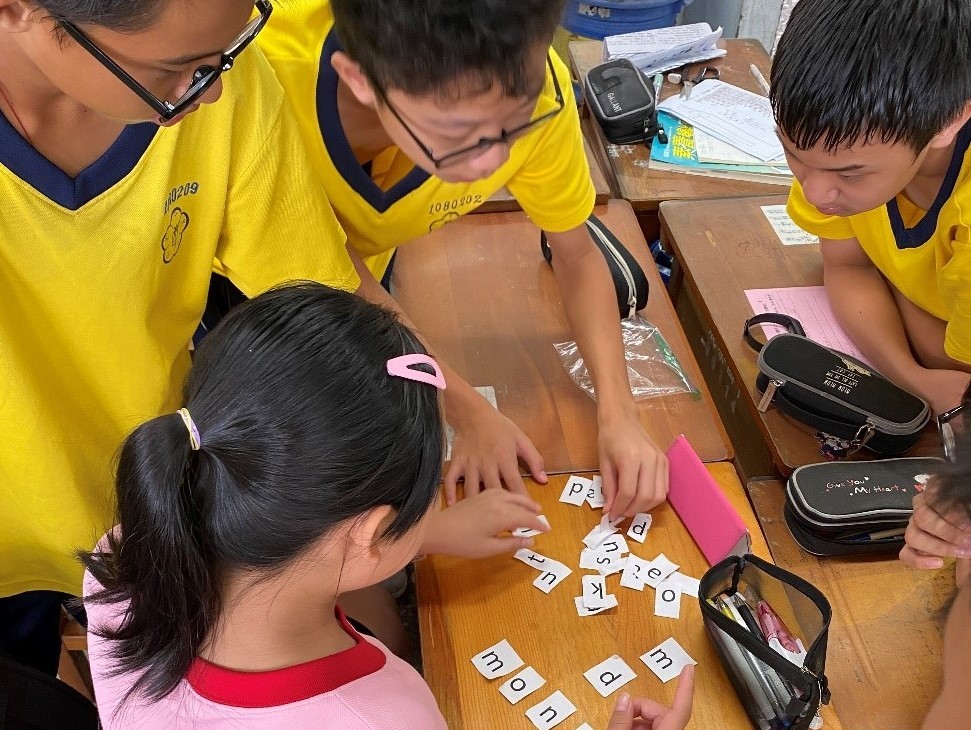 |
With regard to article reading, since the students had had relevant preview, I would either read the paragraphs out or have the students do the reading. Questions related to the given contents were frequently asked. Follow-up questions based on the students’ responses were also included for discussion. This section ended with a review and summary of the contents. Specific techniques were as follows:
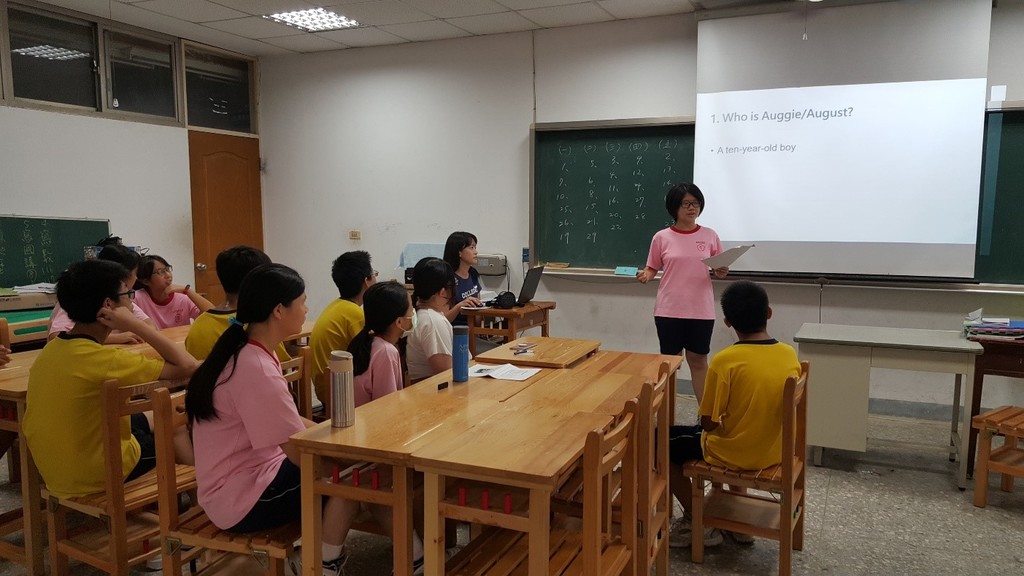
To further enhance students’ comprehension of the novel, the students watched the movie at the end of the semester and completed a worksheet. Since the contents of the novel were closely related to students’ daily lives at home and at school, Wonder effectively motivated the students to learn more about English, to actively participate in the learning tasks, and to have an in-depth probe into the contents. The students not only previewed the learning materials, but also searched for relevant information online. The results were better understanding of the novel, effective acquisition of the messages expressed by the author, deeper learning out of constant reflection, brand-new formation of value judgement,and subsequent application in real lives. Despite the success, a few challenges have been encountered. For example, insufficient vocabulary among students impeded the reading process, thus detailed explanation and elaboration are required . Time for group discussion was also inadequate, thus making it hard to cover every section of the novel. It is a real pity that some details of the book were either lightly covered or skipped in class.
In fact, the aforementioned pedagogical practice reflects the essence of flipped learning, since it inverts the typical cycle of content delivery through face-to-face lectures and knowledge application via homework. By moving students from conventional lecture-based instruction where they are often expected to attain new knowledge in the classroom through lectures and put that knowledge into practice at home in the form of homework, students in the flipped course acquire necessary content knowledge prior to class meetings and are then guided by the teacher to engage in meaning clarification and skill application in the classroom (in this case, in-class discussion). As the students have pre-instructional preparedness by previewing the learning materials, the class time is maximized for more enriching learning tasks (such as in-depth group discussion), which contributed to deep learning rather than superficial learning limited to mere vocabulary building and grammar memorization. Hence, flipped learning shifts the teacher-centered, lecture-based instruction to a learner-centered paradigm.
It is, however, important to know that while flipped learning foregrounds the reversal of content acquisition and knowledge application, the core of flipped learning goes beyond the mere reordering of teaching and learning activities. Simply asking the students to preview the learning materials and assigning them in groups does not guarantee the success of English learning. The focus, instead, should be directed to how to engage students actively in the learning process, apply what they have learned to collaborative and authentic tasks, and transfer the newly-learnt skills to real contexts.
Taken together, what I have learned from the instruction and from the students is the importance of mutual interaction and bidirectional feedback between teachers and students. Such a refocus on interaction and feedback is not only beneficial to teachers’ choices of teaching methods to meet students’ needs, but also helpful to strengthen students’ active learning. In the process of pedagogical renovation, in addition to the emphasis on enhancing students’ motivation to learn, what is equally vital is the enhancement of deeper and critical thinking among students as well as interaction between teachers and students. These considerations drive teachers and students further along the teaching/learning path, an impetus to better education.
創刊日:100 年 6 月 10 日
發行人:教育局局長
出版者:臺中市政府教育局
地址:42007 臺中市豐原區陽明街 36 號
電話:04-2228-9111(代表號)
臺中市教育電子報自民國 100 年 6 月起,每月 10 日發行一期,為教育夥伴提供更快速便捷與寬廣詳實之教育資訊 ,歡迎各界關心教育訊息之舊雨新知,上網免費訂閱,並請廣為推廣宣傳。
蔣偉民局長
蘇美麗科長
課程教學科王柏鈞股長、詹益榮老師;南屯區永春國小蕭俊勇校長、王清峰主任
教育領航:西屯區上石國小劉益嘉校長、黃薏蒨組長;北區太平國小曾娉妍校長、彭文欣主任;
教育動態:中區光復國小張毅宏校長、蔡牧耕主任、林靜鶯組長;東勢區新盛國小譚至皙校長、李曉玲主任;
校園風情:北勢國中林宏泰校長、劉芳如主任;西屯區東海國小林筆藝校長、張凱棠主任、楊琮渝老師;
人物特寫:西區大同國小廖曉柔校長、謝俊宏主任;大里區大元國小張曡今校長、王怡月組長;
焦點話題:清水國中鐘文生校長、洪嘉祥主任、王詠婕老師;烏日區旭日國小吳桂芬校長;
教學錦囊:四箴國中方玉婷校長、董家琳組長;大里區益民國小洪翠芬校長、吳相儒主任;
教育夥伴:西區忠信國小黃美樺校長、施政旻主任;清水區槺榔國小王勝忠校長、林麗玉主任、枋宛臻組長;
書香共聞:大甲區順天國小陳素萍校長、顏淑菁主任;大雅區三和國小李勝億校長、王昭明主任;
行政組:南屯區永春國小蕭俊勇校長、王清峰主任;
網路服務:課程教學科黃晉恩股長;